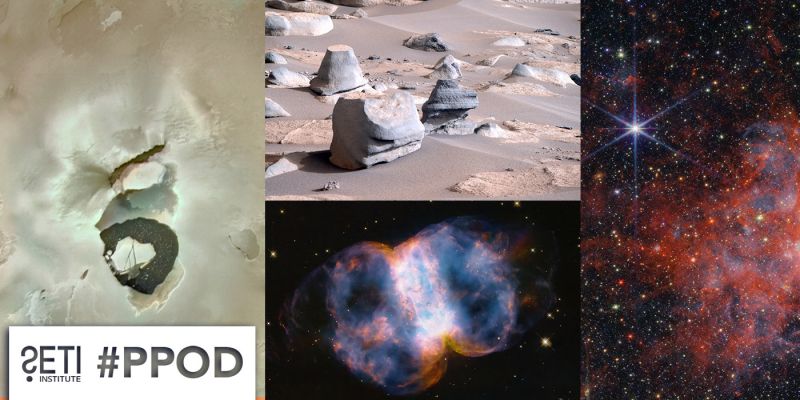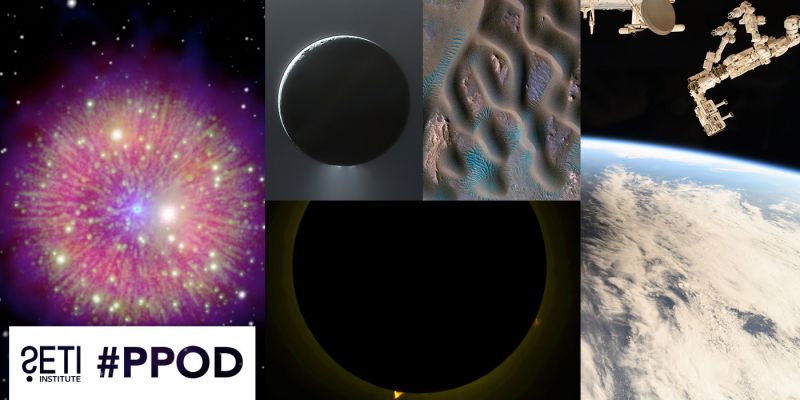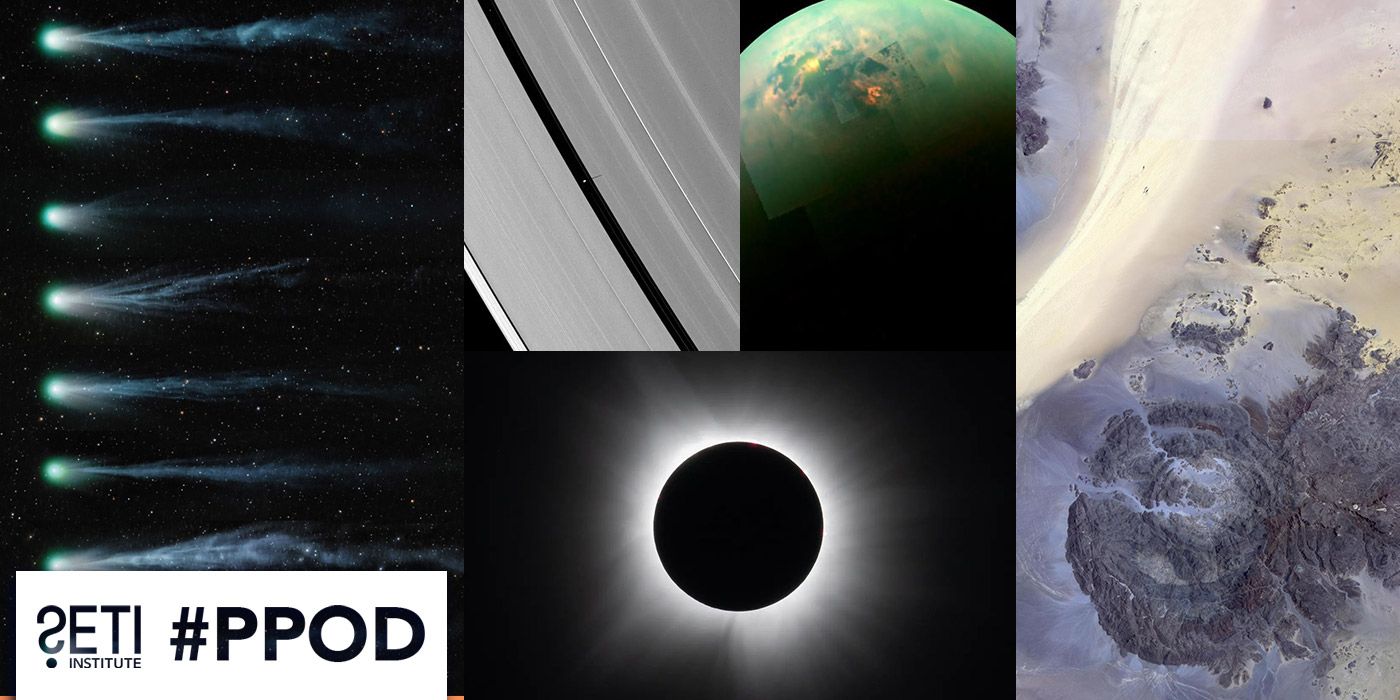
Planetary Picture of the Day
Week of April 15, 2024
This week, we're still in awe of the total eclipse. Plus, the changing tail of comet Pons-Brooks, the largest and smallest moons of Saturn, and some interesting formations right here on Earth.
Monday, April 15, 2024
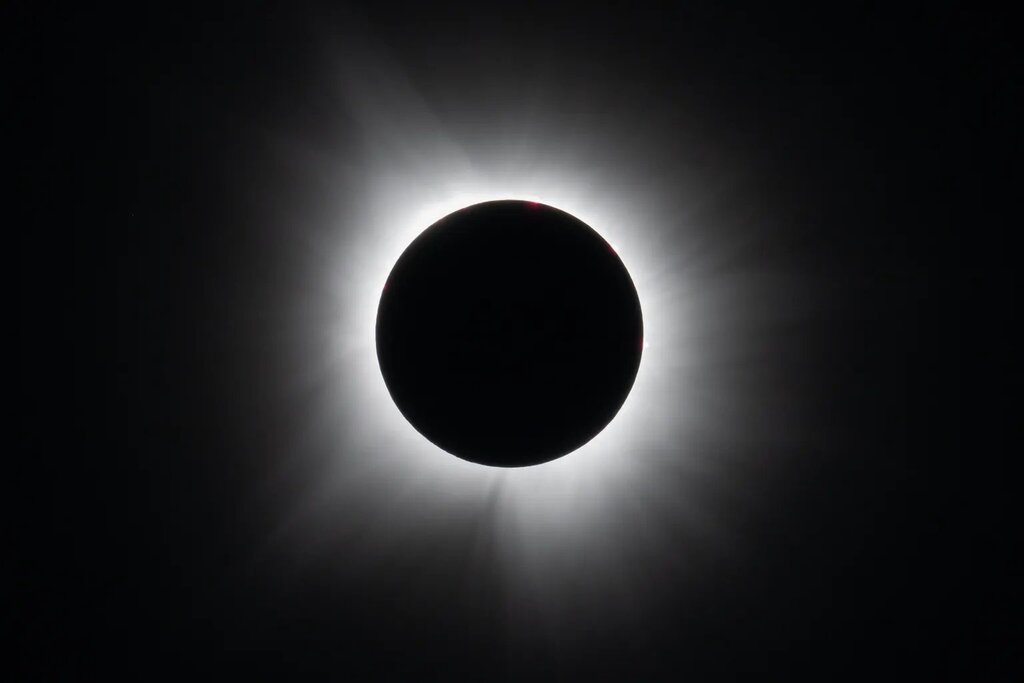
Seeing Totality
On April 8, 2024, a NASA photographer captured the total solar eclipse in Dallas. A small part of North America, from Mexico’s Pacific coast to the Atlantic coast of Newfoundland, Canada, saw the total solar eclipse, while all of North America and parts of Central America and Europe saw a partial solar eclipse. The next total solar eclipse that will travel across the lower 48 states from coast to coast is in 2045.
Tuesday, April 16, 2024
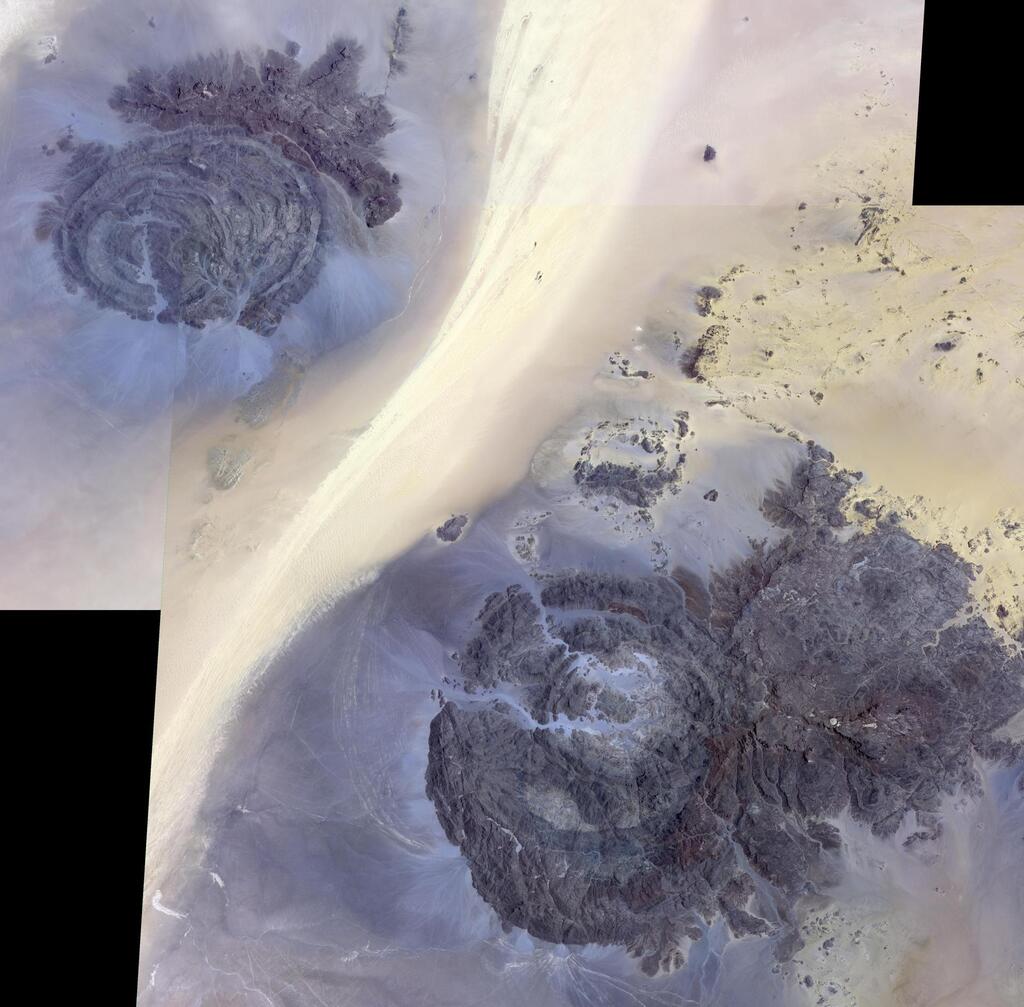
Jebels Awenat and Arkenu, Libya
In the far southeast corner of Libya, in the Libyan Desert, lie the uplifted massifs of Jebel Awenat and Jebel Arkenu. Both expose ancient Precambrian rocks, intruded by granites and then overlain with sandstones. Folding and doming have produced these interesting shapes, rising above the surrounding sand sea. Presently, the area receives less than one inch of rain per year. Thousands of years ago, rainfall was more plentiful, and the Jebels were occupied by people, as attested by the numerous rock drawings.
Wednesday, April 17, 2024
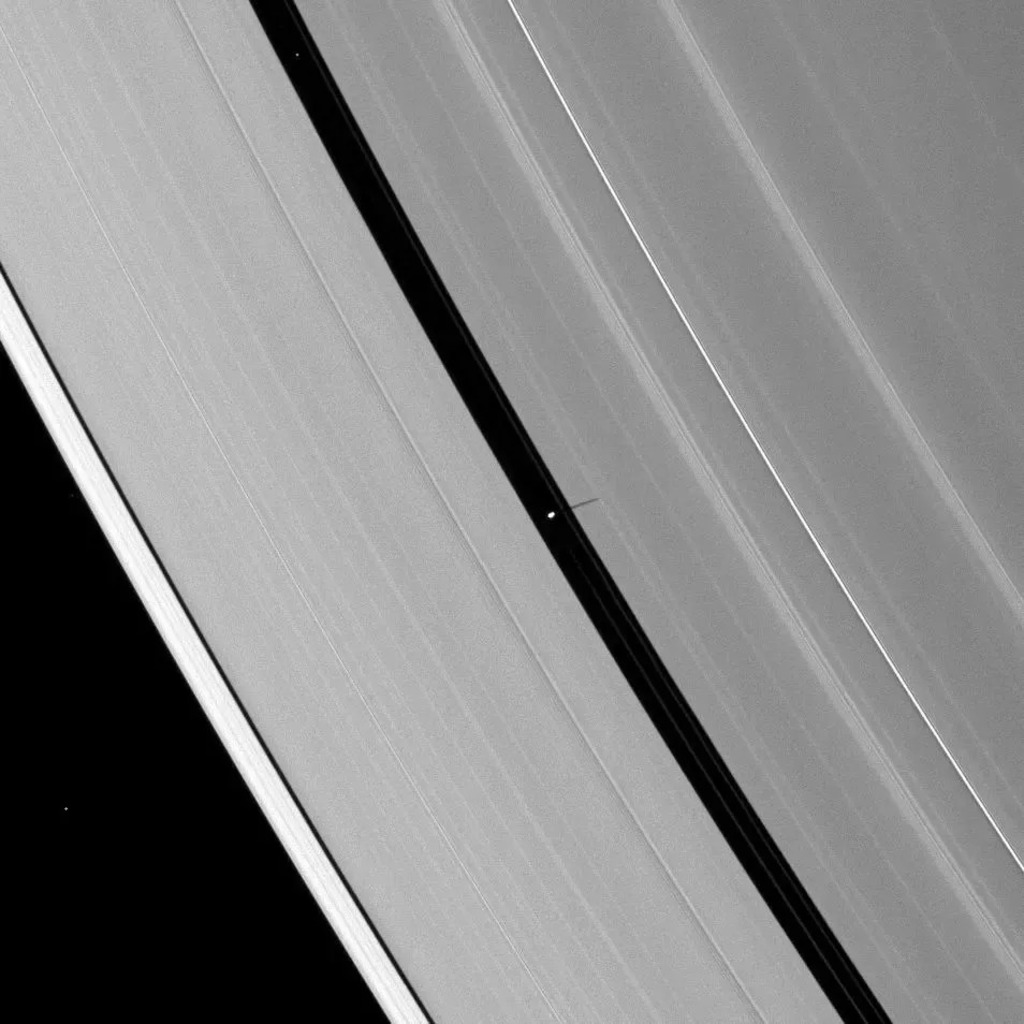
Pan’s Slender Shadow
Shown in the center of this image, Pan (28 kilometers) orbits within the Encke Gap of the A ring. Other bright specks in the image are background stars. As Saturn approaches its August 2009 equinox, the planet's moons cast shadows onto the rings.
This view looks toward the unilluminated side of the rings from about 51 degrees above the ringplane. The image was taken in visible light with the Cassini spacecraft narrow-angle camera on May 2, 2009.
Thursday, April 18, 2024
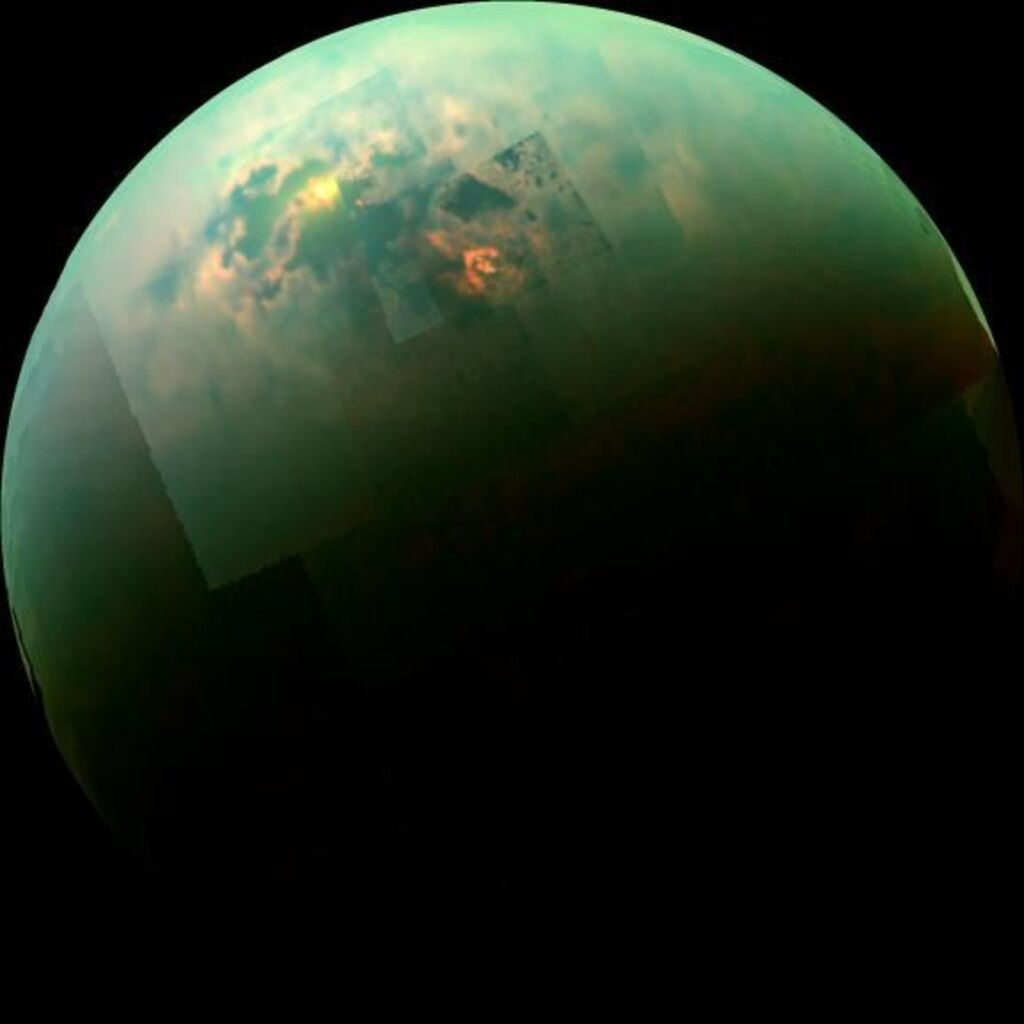
Specular Spectacular
This near-infrared, color mosaic from NASA's Cassini spacecraft shows the sun glinting off of Titan's north polar seas. While Cassini has captured separate views of the polar seas and the sun glinting off of them before, this was the first time both have been seen together in the same view.
The sunglint, also called a specular reflection, is the bright area near the 11 o'clock position at upper left. This mirror-like reflection, known as the specular point, is in the south of Titan's largest sea, Kraken Mare, just north of an island archipelago separating two separate parts of the sea.
This particular sunglint was so bright as to saturate the detector of Cassini's Visual and Infrared Mapping Spectrometer (VIMS) instrument, which captures the view.
Friday, April 19, 2024
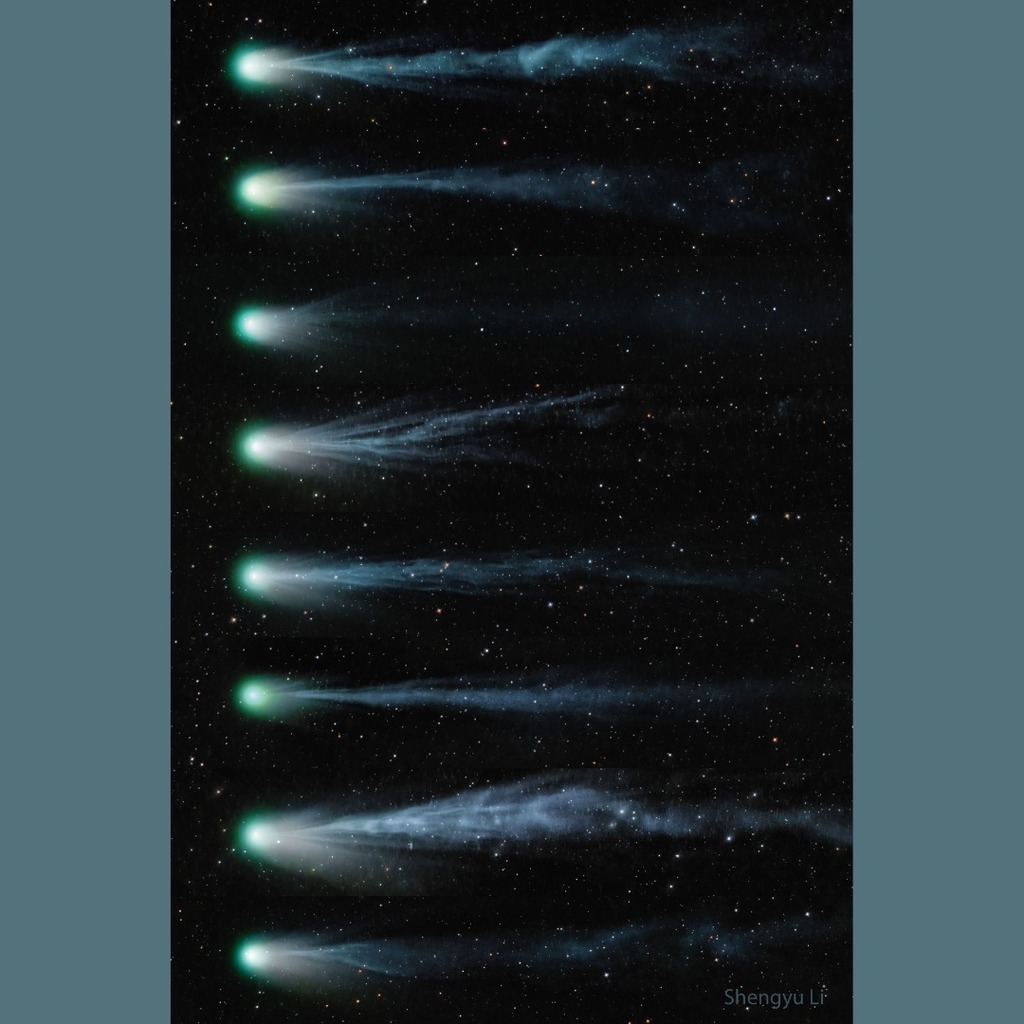
The Changing Ion Tail of Comet Pons-Brooks
How does a comet tail change? It depends on the comet. The ion tail of Comet 12P/Pons–Brooks has been changing markedly, as detailed in the featured image sequenced over nine days from March 6 to 14 (top to bottom). On some days, the comet's ion tail was relatively long and complex, but not every day. Reasons for tail changes include the rate of ejection of material from the comet's nucleus, the strength and complexity of the passing solar wind, and the rotation rate of the comet. Over the course of a week, apparent changes even include a change of perspective from the Earth. In general, a comet's ion tail will point away from the Sun, as gas expelled is pushed out by the Sun's wind. Today, Pons-Brooks may become a rare comet suddenly visible in the middle of the day for those able to see the Sun totally eclipsed by the Moon.


